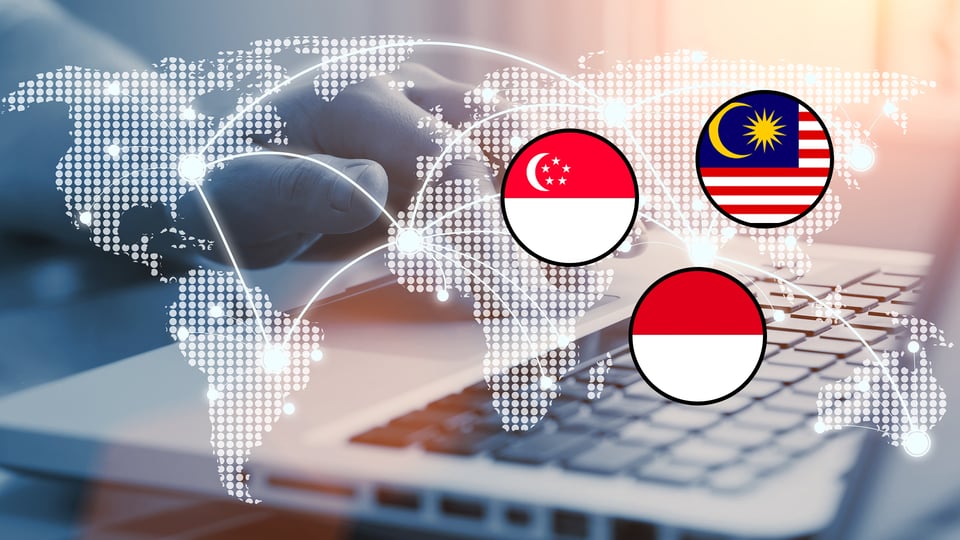What trends are dominating ecommerce in South East Asia in 2023?

In Southeast Asia's diverse ecommerce, tailored strategies are vital due to varied shopping habits and logistics challenges. Parcel Monitor highlights concerns on product info (63%) and support (39%), while favored returns policies include free shipping (69%) and cash refunds (53%). Fast delivery and success are vital in Indonesia, Malaysia, and Singapore. Brands must ace customer experience and logistics. ChannelEngine integration streamlines operations for expansion.
As one of the world’s most unique, exciting, and potentially lucrative ecommerce markets, Southeast Asia presents an incredibly attractive opportunity for brands looking to scale into new regions.
With such drastic variations in shopping habits and logistical capabilities between the eclectic geographies that make up the Southeast Asian market, understanding exactly what is needed to succeed here can often be difficult, and a ‘one-size-fits-all’ approach certainly won’t cut it.
To highlight some of the current trends dominating the region, Parcel Monitor shared its State of Ecommerce in SEA report with us, highlighting essential findings that brands can leverage when selling here.
What are the biggest pain points for consumers in SEA?
Understanding exactly what consumers want and need to see when shopping online before choosing to purchase from your brand over your competitors is essential.
When it comes to SEA, a lack of product information is the biggest pain point by a considerable margin for shoppers when it comes to this journey, with 63% of respondents highlighting this as their biggest deterring factor.
This is followed by inadequate customer support, with 39% of customers citing this as their biggest pain point. Both websites not being user-friendly and a lack of visibility in regards to inventory are equally as problematic, with these topping the pain point list for 32% of shoppers. Finally, the absence of payment options is the biggest annoyance for 23% of customers.
Image 1: The biggest pain points for customers shopping online in Southeast Asia Source: Parcel Monitor)
What do consumers look for in a returns policy?
An attractive returns policy acts as a safety net for customers who may be on the fence about a product, and will often be the tipping point in a person choosing your brand over another.
Unsurprisingly, free shipping leads the way when it comes to shaping an effective returns policy, with 69% of customers expecting this as standard in SEA. This is followed by 53% of people expecting the option of a cash refund for purchased products as opposed to alternatives such as store credit.
31% of consumers want the option to drop off returns or exchanges in store, while 30% expect to receive status notifications as their return makes its journey back to the retailer. Completing the top 5 when it comes to sought-after return trends is a return pickup service, with 28% of people picking this as their most desirable factor.
Tracking and processing returns can take a lot of time when selling on multiple sales channels, including online marketplaces. ChannelEngine’s marketplace integration software provides a platform to centralize orders, inventory levels, and returns for online marketplaces on one dashboard. The system automatically synchronizes returns between your operating systems and connected sales channels to eliminate errors or manual work. With faster and more accurate return management, sellers can provide customers a better experience, increasing customer loyalty and repeat business
Image 2: The top factors consumers look for in a returns policy in Southeast Asia (Source: Parcel Monitor)
Ecommerce Delivery Metrics in Indonesia
Logistics and delivery is one of the most notorious challenges brands face in an area as vast and fragmented as Southeast Asia, however, expectations of businesses are still high in the region.
In Indonesia, customers report an average parcel transit time of 1.47 days, with a 94% first-attempt success rate. When asked which part of the delivery experience matters the most to them, Indonesian consumers chose cost and speed of delivery as the two most highly-valued factors, meaning brands must be extremely competitive in this department.
Ecommerce Delivery Metrics in Malaysia
Average parcel transit times are slightly higher in Malaysia, with a delivery time of 1.59 days, though like Indonesia, first-attempt success rates are also 96%, the high figure potentially attributed to the increasing prevalence of partnerships between international courier companies and local logistics players.
Parcel Monitor’s latest SEA report also found that there was a 9.7% issue ratio in Malaysia, of which 60% was on carriers’ end.
Ecommerce Delivery Metrics in Singapore
In Singapore, the average parcel transit time sits at 1.51 days, with an also impressive 95% first-attempt success rate.
3.6% of deliveries in this region are sent to collection points while the research also found a 5% issue ratio, 15% of this coming from the carriers’ end.
Ready to scale into Southeast Asia?
While the appeal of Southeast Asia is clearer than ever for brands, there is no denying that there are a number of tricky hurdles to overcome in order to find success. With more and more brands now expanding into the region, competition is high, meaning delivering an excellent customer experience paired with effective and reliable logistics capabilities is vital if you’re to stand out amongst the masses.
Leveraging an eCommerce integration partner like ChannelEngine simplifies cross border expansion, including into South East Asia. by automating a number of the common operational challenges such as product listing, optimization and pricing, while also granting access to our network of logistics providers whose in-depth understanding of the region ensures high performance across your delivery and shipping operations.


